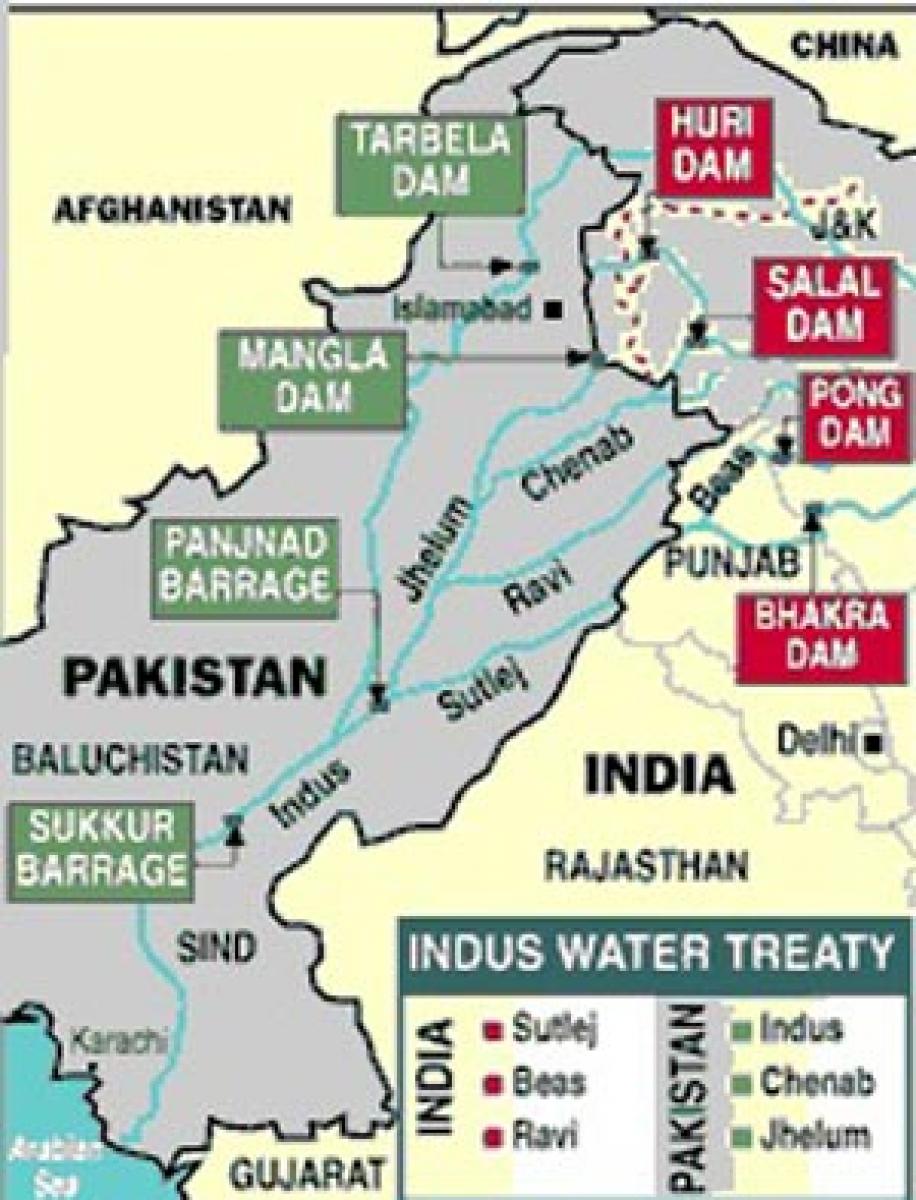Live
- SC upholds ‘secular, socialist’ in Preamble
- RASS conducts Siva Parvathi Kalyanam
- Rs 12L refunded to FedEx parcel scam victim
- Vaikuntha Dwara Darshan from Jan 10 to 19
- Airport at Mandasa sparks protests
- KIIT-DU bags 4th rank in THE 2025 Science rankings
- YSRCP govt signed PPAs with SECI only: Kakani
- SIT speeds up probe in adulterated ghee case
- Cyber crime police refund Rs 3.59L to three cyber victims
- SAAP chairman rebukes Jagan’s comments on fee reimbursement
Just In

With India saying that there have been differences over the implementation of the 1960 Indus Waters Treaty, a dispute that was referred to an international tribunal, under the aegis of the World Bank, the issue has come back into focus because of the current tension with Pakistan following the September 18 terror attack on an army base at Uri in Jammu and Kashmir.
With India saying that there have been differences over the implementation of the 1960 Indus Waters Treaty, a dispute that was referred to an international tribunal, under the aegis of the World Bank, the issue has come back into focus because of the current tension with Pakistan following the September 18 terror attack on an army base at Uri in Jammu and Kashmir. India has raised the issue saying a treaty could not be a "one-sided affair".
The Indus Waters Treaty is a water-sharing arrangement signed in Karachi by the then Indian prime minister Jawaharlal Nehru and then president of Pakistan Ayub Khan on September 19, 1960. It covers the water distribution and sharing rights of six rivers – Beas, Ravi, Sutlej, Indus, Chenab and Jhelum. The agreement was brokered by the World Bank.
The agreement was signed because the source of all the rivers of the Indus basin were in India (Indus and Sutlej, though, originate in China). It allowed India to use them for irrigation, transport and power generation, while laying down precise do's and don'ts for India on building projects along the way. Pakistan feared that India could potentially create droughts in case of a war between the two countries. A Permanent Indus Commission provides a bilateral mechanism for consultation and conflict-resolution.
The treaty gave the three "eastern rivers" of Beas, Ravi and Sutlej to India for use of water without restriction. The three "western rivers" of Indus, Chenab and Jhelum were allocated to Pakistan. India can construct storage facilities on "western rivers" of up to 3.6 million acre feet, which it has not done so far. India is also allowed agriculture use of seven lakh acres above the irrigated cropped area as on April 1, 1960.
Experts say the agreement is one of the most lop-sided with India being allowed to use only 20 percent of the six-river Indus water system. Pakistan itself in July this year sought an international arbitration if India sought to build hydro power projects on the Jhelum and Chenab rivers. Short of abrogation, can India do something? Some experts have said that if India starts making provision for storage facility involving the "western rivers," which it is allowed under the treaty of up to 3.6 million acre feet, this may send a strong message to its neighbour.

© 2024 Hyderabad Media House Limited/The Hans India. All rights reserved. Powered by hocalwire.com







